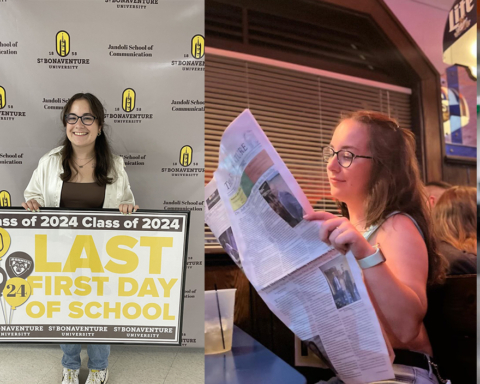By Harrison Leone
Managing Editor
Rod Stewart once said “I suppose I could collect my books and get on back to school.” Today, Mr. Stewart would be forking over so much money on those textbooks he’d have to hustle pool to balance his budget.
As most students are likely aware, textbooks are one of the most nagging, needling costs of a college education that is more bloated than a beached whale carcass as it is.
Every year, students are shackled with exorbitant costs that never seem to stop rising, with textbook prices leading the way.
According to a study done by USA Today, textbook prices rose 82 percent between 2002 and 2013, over three times the standard rate of inflation. Students will spend $655 annually on “course materials”, according to a study done by the National Association of Collegiate Stores in 2014.
The most disheartening aspect of this whole process is the rate at which publishing companies churn out new editions to their textbooks, rendering their old editions — many of which contain predominately the same information — obsolete. The average textbook is re-issued every 3.9 years, and the new edition is often double the price of the “outdated” version, and sometimes more.
There are few things quite as disheartening as seeing the cost of the textbooks for a class break into the triple digits and keep climbing.
I wanted to see how much of a consideration the cost of textbooks was to a professor when they assigned it to their classes. I decided to start in my most familiar department, history.
“Yes, I definitely look at price, because they sometimes get ridiculously expensive,” Philip Payne, Chair of the History Department said. “Especially when you consider your average US history textbook has been around for a while, there’s not a lot of cutting edge stuff in there.”
Payne said once he finds a textbook he believes will stimulate class discussion and covers the material required for a given course, he will stick with it for several years.
“I usually ride a textbook for a while, several years,” Payne said. “I do change the other readings in the class, almost every time I teach the class, however. I mean, to switch from this textbook to that textbook, it’s usually not a huge switch, content wise.”
But that’s history, a discipline that by definition looks to the past. I decided to approach professors in other schools, ones that advance at a faster pace than the relatively glacial movement of scholastic history, to see if they encountered similar phenomena.
Finance Professor Giles Bootheway agreed textbooks in introductory levels of statistics and economics courses are often updated with little to no substantive content changes.
“I am disappointed at the cost of textbooks,” Bootheway said. “I’m not anti-textbook at all, but for many introductory and intermediate courses, the knowledge has often been established up to one hundred years ago, nothing changes. The first edition of the textbook is really just as good as the ninth edition. It’s true that some authors can tinker a bit and make some visual improvements, but there’s nothing in a statistics textbook in the first edition that you’re not going to find in the ninth edition.”
Bootheway admitted a textbook with legitimate updates to relevant material would be worth consideration, but updates are otherwise exclusively cosmetic.
“If somebody wants to write a new textbook because a new, original and interesting way of conveying the information, I have no problem with that,” Bootheway said. “More power to you, if you can explain something in an efficient way, that’s great.”
“It may be true that, on occasions, when animated, I might have said it’s a scandal,” Bootheway said. Then, after a pause, he added. “No, it is a scandal, come to think of it.”
I could not agree more with this analysis.
Bootheway admitted that in certain areas of finance, textbook updates were necessary because the content of the material did actually change.
“In more specialized, higher level classes, it’s possible that the field has advanced in the past five years. Another exception might be accounting textbooks, because accounting textbooks evolve quite frequently,” Giles said. “But not introductory textbooks for God sakes.”
So, the school of the humanities and the school of business seemed to support the thesis that textbook prices are unhinged and may not reflect the value of the content. After all, in the past 30 years, their prices have outpaced the rise in the Consumer Price Index by nearly three times. In fact, their price increase of 812 percent in that time period is a number more familiar to Zimbabwean currency inflation than consumer goods.
I turned last to the science department, the place where I thought textbook updates would be most valuable, as new information would seem to be coming in at all times and would require rewrites and their subsequent price jumps.
Dr. Joel Benington, director of the bioinformatics program, said he was aware of the burden textbook prices placed on students, and took that factor into consideration when assigning texts to his courses.
However, Benington also added that, because his fields are constantly evolving, he will assign a textbook he considers to be more update, even if the cost is slightly more.
“The use of the textbook is part of a much larger endeavor where the students are paying tuition for the course, as well as room and board for the school. The average cost of a three credit course is about $2000.
Add in the hours you spend on a substantial course, which add up to over 100 hours of work,” Benington said. “That’s why, to me, if a better textbook costs more, as long as it’s within reason, the more that it costs is worth your spending in order to get a better learning experience.”
Benington added he has come across a textbook whose update added no significant information, although this was an exceptional case within his field of study. Benington said he believes such textbooks are a waste of the students’ money.
“I looked at the new edition with my laboratory instructor, and noticed that there was no change in content. All they did was they added some URLs to the 5th edition to make it look 21st century,” Benington said. “There was no change in content, and that offended us so much that we specifically said to our students ‘get either the 4th edition or the 5th edition’. In that case, there was no advantage at all in getting the 5th over the 4th.”
I had always felt slightly screwed when the slow drip of textbook costs was added to the financial hemorrhage that a college education has become.
I realize the ability to pursue higher learning is a privilege that, even today, eludes millions around the world, and is still out of reach to many in the developed world.
This does not mean that I should be happy about paying $150 for a textbook that would otherwise cost $10 were it not for a rearrangement of the chapters and a handful of new graphics.








